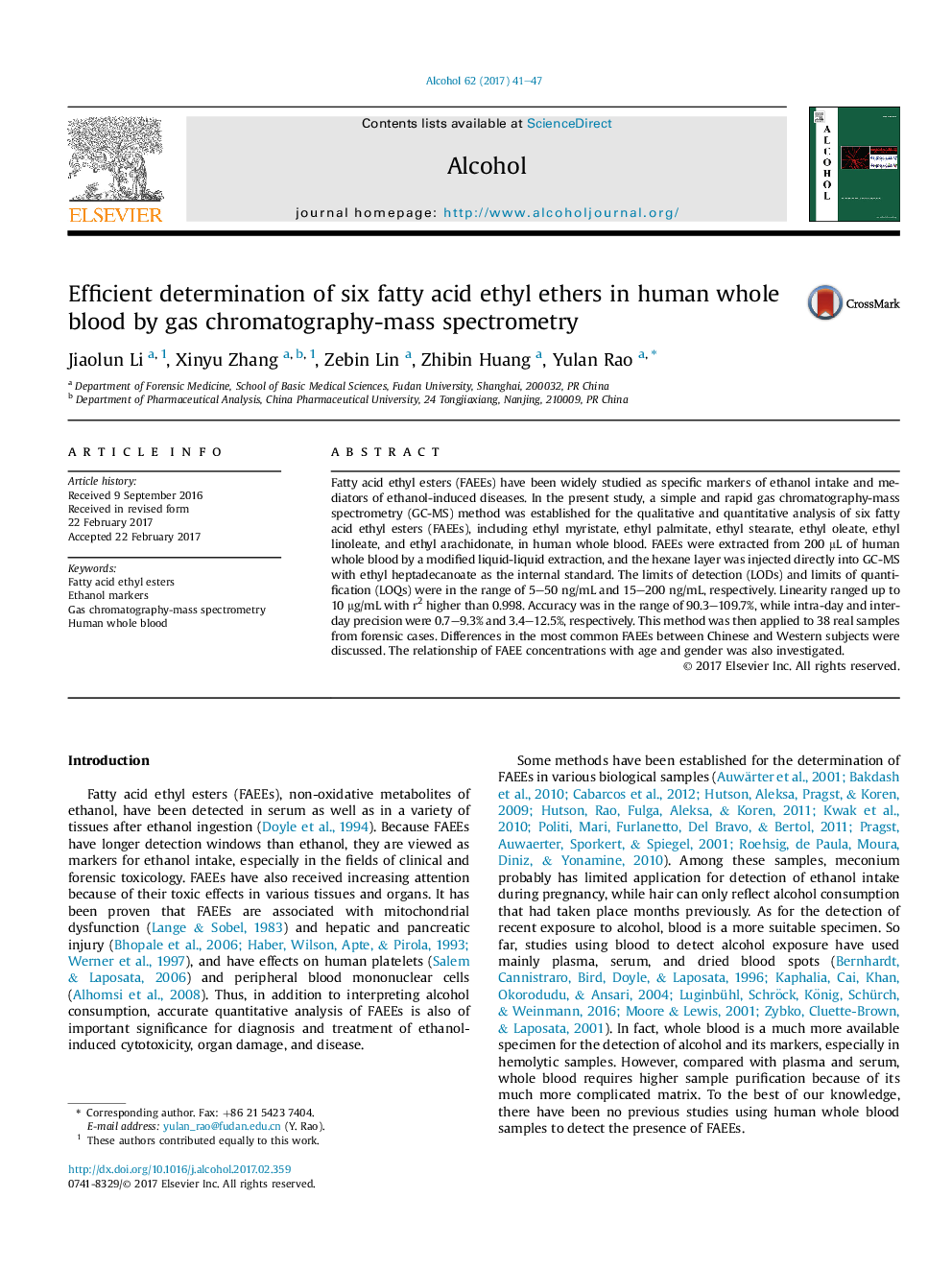| Article ID | Journal | Published Year | Pages | File Type |
|---|---|---|---|---|
| 5119574 | Alcohol | 2017 | 7 Pages |
â¢Human whole blood was used as a specimen for FAEE determination for the first time.â¢Only 200 μL of blood was used, and small amounts of organic solvents were consumed, which was environmentally friendly.â¢The sample preparation avoided the use of a time-consuming vaporization-reconstitution procedure, making it rapid and simple.â¢The correlation between FAEEs and age, and FAEEs and gender were investigated.
Fatty acid ethyl esters (FAEEs) have been widely studied as specific markers of ethanol intake and mediators of ethanol-induced diseases. In the present study, a simple and rapid gas chromatography-mass spectrometry (GC-MS) method was established for the qualitative and quantitative analysis of six fatty acid ethyl esters (FAEEs), including ethyl myristate, ethyl palmitate, ethyl stearate, ethyl oleate, ethyl linoleate, and ethyl arachidonate, in human whole blood. FAEEs were extracted from 200 μL of human whole blood by a modified liquid-liquid extraction, and the hexane layer was injected directly into GC-MS with ethyl heptadecanoate as the internal standard. The limits of detection (LODs) and limits of quantification (LOQs) were in the range of 5-50 ng/mL and 15-200 ng/mL, respectively. Linearity ranged up to 10 μg/mL with r2 higher than 0.998. Accuracy was in the range of 90.3-109.7%, while intra-day and inter-day precision were 0.7-9.3% and 3.4-12.5%, respectively. This method was then applied to 38 real samples from forensic cases. Differences in the most common FAEEs between Chinese and Western subjects were discussed. The relationship of FAEE concentrations with age and gender was also investigated.
